
Intellicast S6E27 – New Data Privacy Laws, Award Winners, and an MR News Update
October 25, 2023
Intellicast S6E28 – A Look at AI in Market Research
November 10, 2023In early 2023, the writers who bring our favorite shows and movies to life put down their pens and took a stand. For nearly five months, the Writers Guild of America was on strike, fighting for better pay and respect in a world where streaming shows are king. It wasn’t just about money; it was about how technology like AI is changing their work. This strike, the longest one in recent memory, affected lots of jobs and made us think about the future of TV and movies. We were curious how much people knew about this big change, so we asked in our most recent wave of Research-on-Research. Now, we’re ready to share what we learned about the public’s take on this major moment in Hollywood.
Overall, 77% of respondents have a handle on the basics or more (Percentage of respondents are either somewhat familiar or very familiar). Respondents were also 4% more likely to be very familiar than not familiar at all.
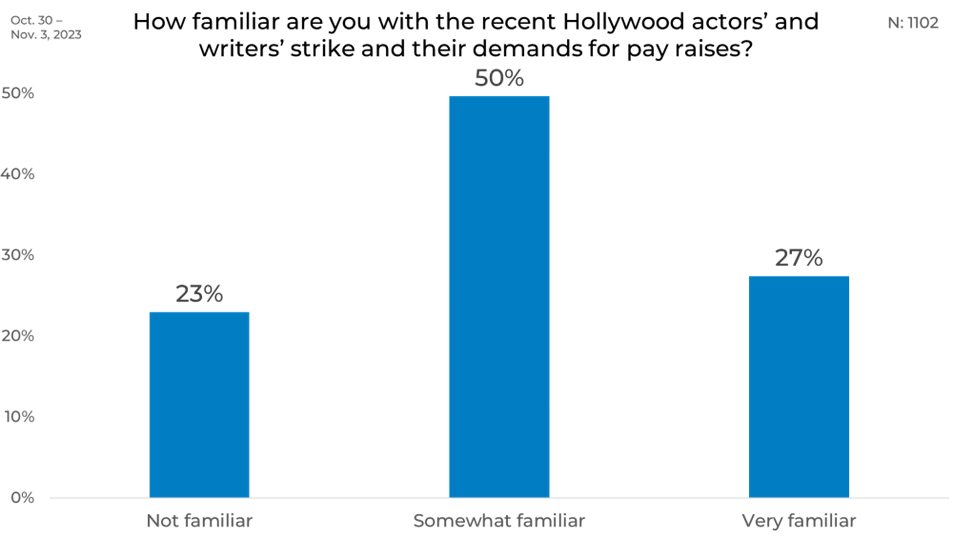
Gender
Gender seems to play a role in how familiarity pans out. Women are notably 10% more likely to indicate they’re not familiar with the strike, while men are 12% more likely to report being very familiar. This distinction opens a conversation about the different journeys we take to acquire knowledge.
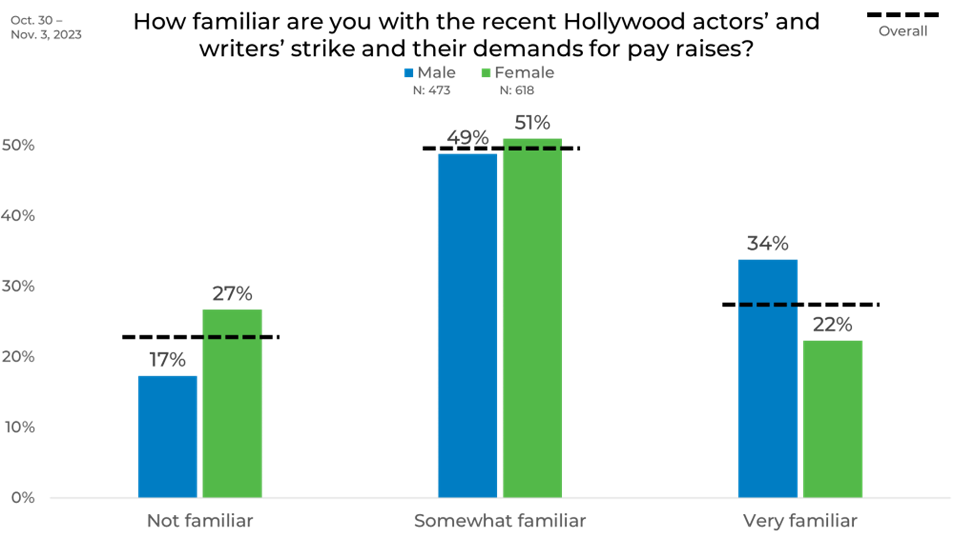
Age
Age seems to weave its own story into our survey results. Participants in the senior bracket, those aged 65 and over, were more likely to have a basic familiarity with the strike, mostly falling into the “somewhat familiar” category. This group was 15% more likely to claim this level of familiarity than any other age demographic. The survey also hinted at a broader trend: as individuals age, their likelihood of being “somewhat familiar” with the strike increases, with those over 65 being 24% more likely than young adults aged 18–24 to say so. Yet, when it comes to a deeper understanding, it’s the younger generation, particularly those between 18 and 34, who lead the charge, suggesting that youth may be more attuned to the intricacies of current events.

Income
Income levels painted a more complex picture of familiarity with the writers’ strike. Those earning under $20,000 a year were most likely to be out of the loop, with a 19% higher chance of being unfamiliar than those making between $60,000 and $99,999. Interestingly, it’s the latter income group that stood out in the “somewhat familiar” category, being 9% more likely than any other income bracket to have a moderate grasp on the subject. When it comes to being in the know, the differences were less pronounced, yet those earning above $100,000 had an 8% edge over those with incomes between $20,000 to $39,999 in being “very familiar”.
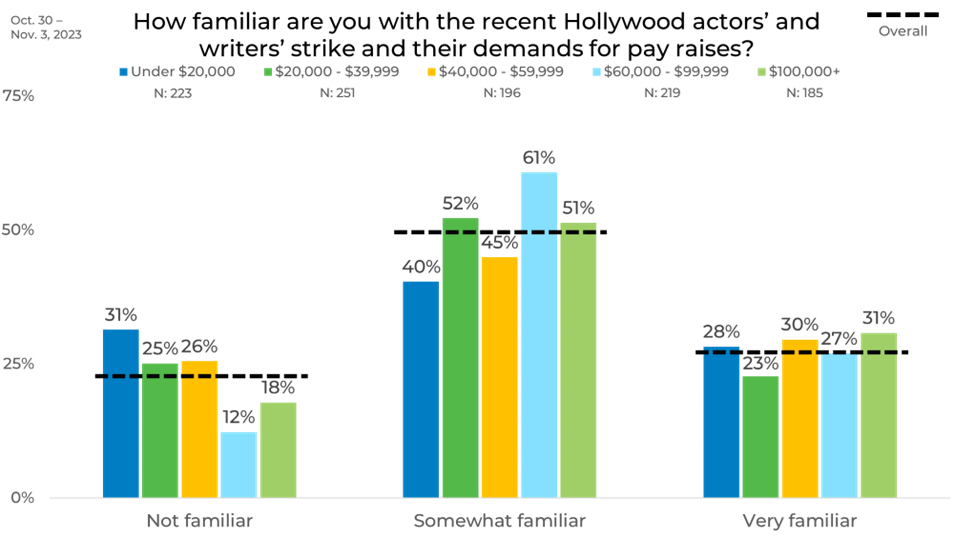
Political Affiliation
Delving into how political affiliations intersect with awareness, we find that Republicans are 11% more inclined to express unfamiliarity with the strike than Democrats. Conversely, Democrats tend to have a firmer grasp, with a 6% greater chance of being somewhat familiar and a 12% higher likelihood of being very familiar. Most strikingly, individuals affiliated with “Other” political groups report a 45% rate of unfamiliarity, standing 20% higher than any other group.
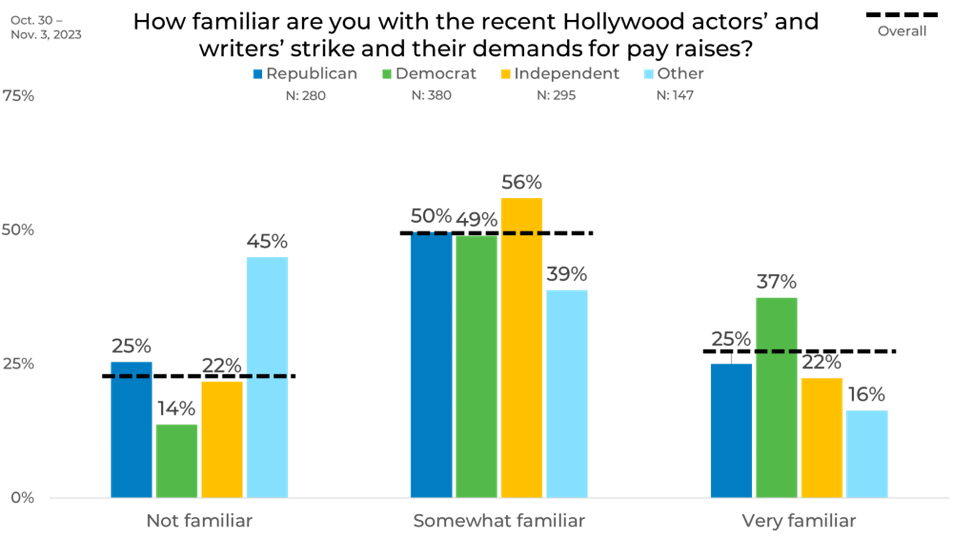
Ethnicity
The ethnicity-related findings reveal that Caucasians and Asians or South Asians showed a strong tendency towards being somewhat familiar with the strike. African Americans and Hispanics/Latinos, however, topped the chart for being very familiar with the strike, with 37% and 35% respectively in this category, marking a significant 10% difference from other ethnicities.
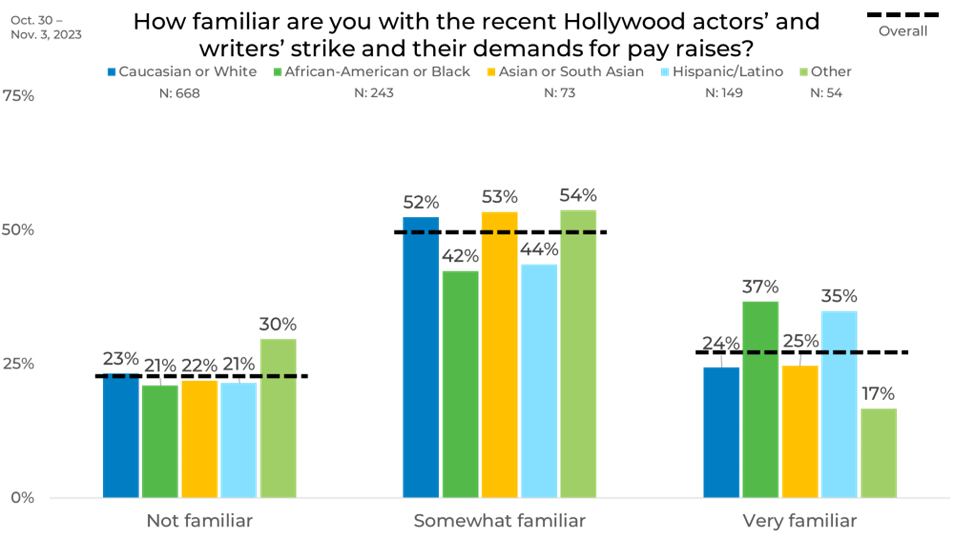
Region
In the regional breakdown of our survey, the Midwest was notably less familiar with the writers’ strike, with a 6% higher likelihood of unfamiliarity compared to other regions. This group was also 7% less likely to have a thorough understanding of the event. In contrast, the other regions – Northeast, South, and West – displayed a striking similarity in their levels of familiarity, with only a 2% variance in those who were very familiar with the strike.
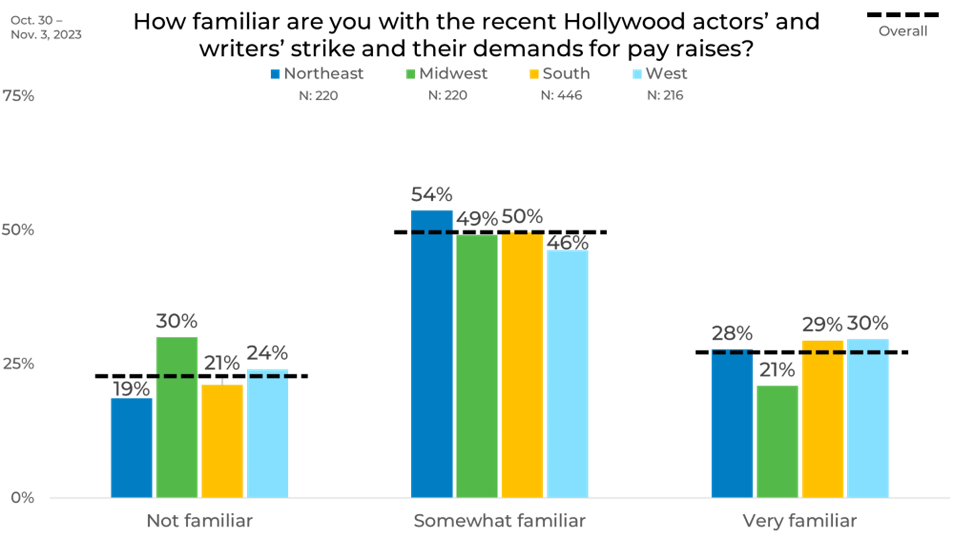
Panel
When looking at the breakdown by panels, Panel D stands out as being the most likely to be somewhat familiar at 64%. Nearly half (40%) of Panel C reported that they were very familiar, this was 23% more than Panel A. The largest difference comes from Panel D, which was 25% more likely than Panel E to be somewhat familiar with the strike.
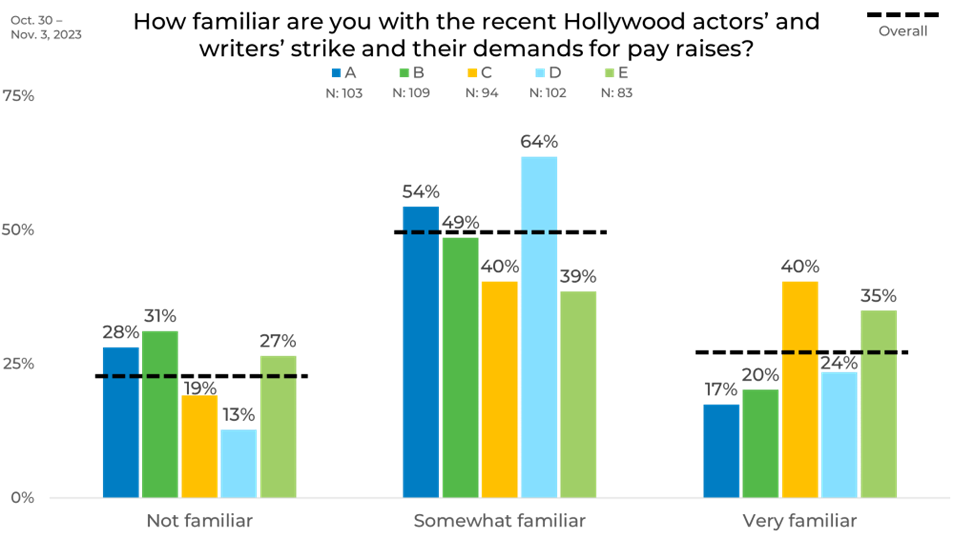
As you can see, attitudes and behaviors can vary greatly by both demographic and panel. This can have a significant impact on your data. For instance, if someone only used Panel C for their research, they could have respondents who are much more familiar with specific current events than others. This is why strategic sample blending is the best practice to ensure any changes in your data are due to shifts in the market, not inconsistencies in your data.
Want to see how you can account for panel bias in your tracker? Download our new whitepaper, Strategic Sample Blending: The Premier Sample Methodology for Tracking Studies!




